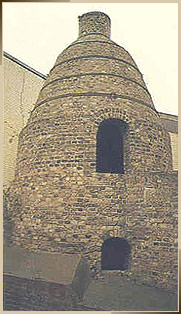|
History of Cement |
|
 |
In the 18th century a big effort started in Europe to understand why some limes
possess hydraulic properties.
John Smeaton often referred to as "father of civil engineering in England" concentrated
his work in this field.
The French Engineer Louis Vicat, inspired by the work of Smeaton and Parker, began
a study of hydraulic limes in 1812 (published in 1818 as "Recherches experimentales
sur les chaux de construction". He reported that in the absence of naturally occurring
argillaceous components in limestone, quality hydraulic limes could be prepared
by the calcination of fixed ratios of clay proportioned with quicklime.
In 1818 an English patent was granted to Maurice Leger for "Improvement method of
making lime" (Leger used Vicat's method).
In 1822, the production of "British Cement" had been started by James Frost at Swanscombe
based on a patent for "a new cement or artificial stone".
The invention of Portland Cement is generally credited to Joseph Aspedin, an English
Bricklayer in 1824. It involves a double kilning such as was described by Vicat. |
 |
In 1838 a young chemical engineer, Isaac Johnson, burned the cement raw material
at high temperature until the mass was nearly vitrified producing the modern Portland
Cement.
The German Chemist Wilhelm Michaelis proposed the establishment of cement standards
in 1875.
The earliest kiln is one of William Aspedin's bottle kilns from Robins & Aspedin
factory at Northfleet.
The earliest bottle or dome kilns were open kilns with tapered chimney to increase
the draft. They were burned in a batch rather than in a continuous fashion and were
charged with alternating layers of raw feed and solid fuel.
The chamber kiln was an improved design developed and patented by Mr. Johnson. The
combustion gases from the kiln dried the raw material so that when the kiln was
burned out a new charge of dried material is immediately ready for use.
The time and heat losses resulting from drawing the clinker, recharging the kiln,
and then heating it again led to the design of shaft kiln with continuous burning
of the materials, one of the main problem of the new kiln operation was the difficulty
of obtaining an even clinker burning, as some of the product would be greatly under-burnt
and others be much more heavily clinkered.
In 1898 Atlas Portland cement company according to Lewis improved the design by
using what is called a rotary kiln, this improvement was a big revolution in the
cement industry because the new kiln could produce 200 cement barrels per day compared
to a shaft kiln which produced only 40 to max 80 barrels per day; in addition to
quick improvement in this new design regarding the mixing, grinding equipments for
raw material, grinding equipments for coal, belt conveyor using mix kind of fuel
such as natural gas (1904, Iola Portland cement, Iola Kansas).
In practice, the operation with the first generation of rotary kiln (Ransone kiln)
was very difficult due to problem of maintaining a sufficient and uniform kiln temperature
with excessive balling of raw feed and sticking on the Frederick lining.
In 1899 Atlas Cement Company improved the technology of the rotary kiln and fuel
economy by replacing fuel oil with powdered coal dust. Furthermore, modifications
to the kiln were made by addition of two auxiliary clinker coolers, in which the
first hot discharged clinker was received as it fell from the kiln and air flowing
over it was heated and helped to ignite the coal dust in the rotary kiln.
The new clinker produced from the new kiln technology was different than the old
clinker especially from the setting time (much faster setting time). The French
chemist Pierre Giron solved this problem by adding gypsum to the cement in order
to control the setting time.
After 1900 there was rapid growth in both rotary kiln and auxiliary equipment technology
in the United States. Coal grinding mills were developed and coal burning in cement
kilns became the predominant combustion process in the industry. All the equipments
related to cement production crusher, raw mill, belt conveyors, bucked elevators
were improved.
Improvement in the following fields pertaining to cement manufacturing from material
science technology has been an ongoing process for 200 years.
Source: www.cimnat.com |
nike cortez
oakley
chaussures de foot
nike chaussure
nike schuhe
Scarpe
Adidas superstar
scarpe Nike
Scarpe
Cappelli
chaussures femme
Scarpe
Cinture
michael kors
air max
chaussure de sport
christian louboutin
nike air force
schmuck
chaussures sport
Nos Meilleures Ventes: Acheter Viagra, Cialis, Levitra en ligne
Levitra prix
Viagra 100mg prix en pharmacie, prix du viagra 100mg en pharmacie, viagra 100mg prix pharmacie,viagra prix,viagra pharmacie
viagra prix
KAMAGRA QUE ES,KAMAGRA GEL QUE ES,KAMAGRA 100 MG QUE ES,KAMAGRA ORAL JELLY QUE ES,KAMAGRA 100MG
kamagra 100mg
Cialis Prijs Belgie,Cialis Prijs Apotheek,Cialis Prijs Apotheek Belgie
cialis belgie
CIALIS PAS CHER,CIALIS GENERIQUE,CIALIS 20MG
cialis 20mg
Super Kamagra Belgique,Super Kamagra Avis,Super Kamagra Effet Secondaire
kamagra belgique
|
|
|